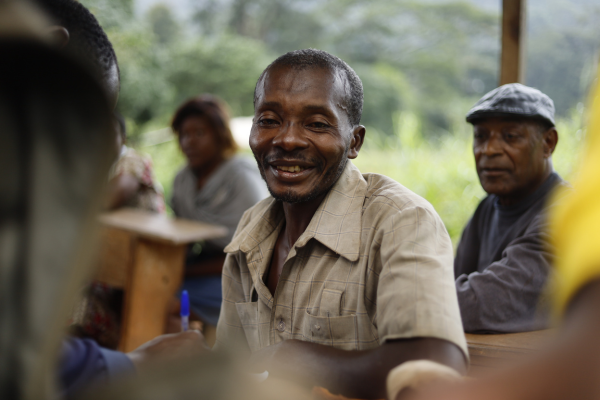Challenges and Community-based approaches to accelerate control of NTDs
Dr Muhammad Mansur Rabiu, Consultant, Noor Dubai Foundation/ Dubai Health Authority

Neglected Tropical Diseases (NTDs) are a group of over 20 diseases that afflict the remotest parts of the world. They are often found in areas where the majority of the population live below the United Nations poverty line, where people have limited social and health amenities. These diseases afflict over 1 billion people with over 1.6 billion requiring treatment, most of whom are in Africa, Asia, and parts of Latin America, causing death, disability, misery, and a vicious cycle of poverty. The annual economic loss due to these diseases in lost productivity is estimated at over $33 billion. The nature of these diseases’ emergence, propagation, spread, and severity are due to a series of inter-connected community-based factors, including environmental factors like topography, climate, precipitation, aridity, vegetation, and humidity etc.; social factors involving cultural beliefs and practices, personal, sanitary and environmental practices; economic factors which affect choices and practices in nutrition, hygienic activities, etc.; and absence of health structure and social amenities.

Still, a lot of work needs to be done to achieve the targets set out by the World Health Organization (WHO) NTD Roadmap 2030, which intends to achieve, among other things, elimination of at least one NTD in 100 countries and eradication of two NTDs by the year 2030.
There are several challenges that stakeholders in the NTD control face which could hinder the attainment of these goals. Non-governmental organizations (NGOs) are major players in the control of NTD in most countries afflicted by these diseases. Some of the constraints that NGOs face in NTD control include a dearth of local resources to leverage the NTD control programs. Some NTD communities have no basic health structure nor basic social amenities (like water, sanitation, schools, roads, etc.), which are necessary ingredients for effective and successful implementation of control measures. Indeed, some communities have no access road to reach them.
These situations often necessitate that NGOs need to spend extra money to at least set up basic health structures and amenities, deviating funds meant for the primary implementation of NTD control strategies. There were instances where NGOs even had to mobilize funds to construct access roads before commencing disease control programs. This ‘extra-budgetary spending’ results in high expenses for the programs, occasionally beyond the capacity and mandates of these NGOs.
Another major challenge encountered in some remotely located NTD-afflicted communities with limited communication with the outside world is ‘harmful’ cultural and social beliefs and practices that accelerate the spread of disease or impede the actualization of control measures. Recently, the escalation of insecurity due to political/civil unrest and wars across many NTDs-endemic areas like Yemen, Sudan, Ethiopia, and across some West African countries have disrupted control activities despite progress made over the past decade. This came after the COVID-19 pandemic had significantly disrupted all public health interventions globally, including NTDs control programs. The effect of the COVID-19 pandemic is still felt across many NTD programs because of the lingering disruption of the supply chain of the medications used in the NTD control programs. Several NTD programs have had to postpone mass drug administration of the antibiotics used in programs or, at best, prioritize areas to give the medications. The populations in some NTD-endemic areas, like those with Trachoma and River blindness, are suspected to have developed resistance to these antibiotics due to the hyper-endemicity of the disease requiring long-term distribution of these life-saving medications. Investigations to ascertain this suspicion are ongoing.
To address these challenges and accelerate the attainment of the WHO NTD roadmap targets, stakeholders, especially NGOs, need to re-strategize control approaches. The enhancement of community-based approaches may potentially address some of these challenges. These include rebuilding trust with the communities through reengagement with community and religious leaders to ensure buy-in, ownership, and active participation. These community leaders must be involved from A to Z in the control programs. From assessment (surveys) of the diseases to interpretation of assessment results, designing of the solution (the control measures), and implementation of the agreed solutions. In designing the solutions, the community members/leaders must be listened to so as to allow modifications of control strategies to align with ‘harmless’ community and religious beliefs. This will ensure suitability, appropriateness and acceptability.
A typical example of a success story in applying such an approach was the use of Islamic religious teachings on personal and environmental hygiene in a Northwest district of Nigeria for the control of an NTD. One of the five major WHO NTD control strategies for NTDs is water and sanitation. This Nigerian district had one of the most severe, persistent hyper-endemic burden of trachoma. One of the major pillars of the trachoma control strategy is facial cleanliness, personal and environmental hygiene. We partnered with the religious leaders and clerics in the communities to educate the people on the religious value and importance of personal hygiene. They also preached to encourage adults and children to regularly perform the required face washing before their five daily obligatory Muslim prayers. With this, the hyper-endemic district was able to significantly reduce the burden of the disease. Currently, the district has achieved elimination of the disease as a public health problem.
Another community-based approach that needs to be considered by stakeholders in NTD areas is aligning control activities with other important ‘needs’ of the community. These can be malarial control, measles control, water supply, or even social empowerment programs. This holistic approach with multisector participation is able to achieve multiple goals with one stroke. Communities are more likely to accept, support, and actively participate in such an approach. We have had another success story that buttresses this point. There were some communities that were not doing well in trachoma control due to limited community interest and participation. They were turned into more proactive and pro-actively participating communities when the program was aligned and ‘piggy-backed’ along with a malarial control program (which the community prioritised the more) that involved the distribution of insecticide-treated mosquito nets and environmental sanitation and modifications that support both diseases control strategies.
Finally, it is time we approach NTD control not only as a health issue but also as a development issue. This could attract more attention and cooperation from the community, and may also align with government priorities and open doors for new resources and partnerships. With these measures and other more concerted efforts by all involved, the targets of the WHO NTD roadmap 2030 are potentially achievable.

Dr M Mansur Rabiu is a consultant ophthalmologist and a senior public health ophthalmologist. He is currently a consultant with Noor Dubai Foundation UAE and Dubai Health Authority, Dubai, UAE. He is also an honorary visiting Professor at Kaduna State University, Nigeria. Dr Rabiu studied in Nigeria and UK. He is a Fellow of the West African
College of Surgeons and the National Medical College of Ophthalmology. He has a Master’s in Community eye health from University College London.
Dr Rabiu has designed and implemented several eye care programs including some Neglected Tropical Diseases across many countries. He is a member of World Health Organization (WHO) technical expert groups for eye health and a WHO temporary adviser in various eye health programs across countries. Previously Director of Programs at the International Agency for Prevention of Blindness at the Eastern Mediterranean region. He has published over 70 scientific articles in
peer-reviewed journals including in some neglected tropical diseases, co-authored a number of booklets and a journal reviewer for over 10 scientific journals. He had presented papers in over 80 local and international scientific meetings.